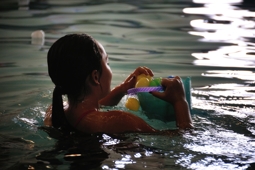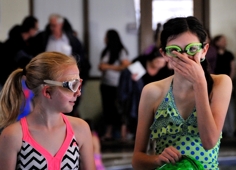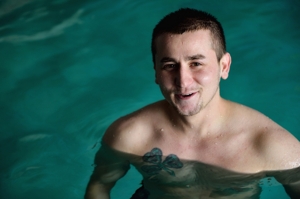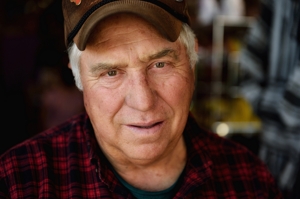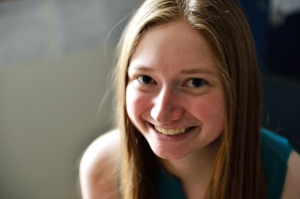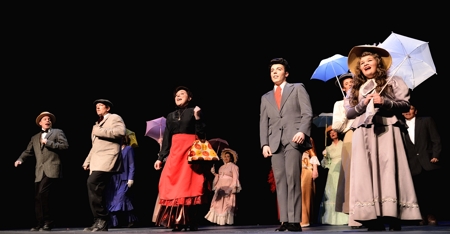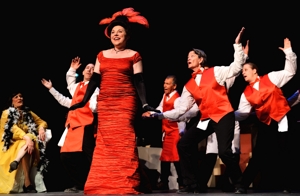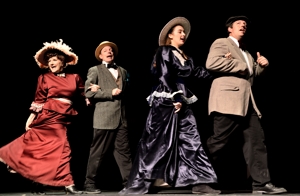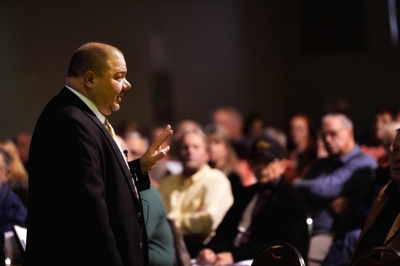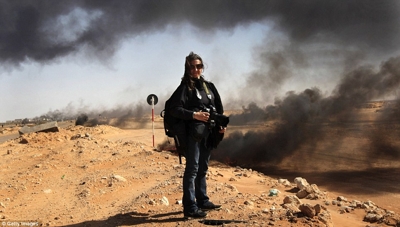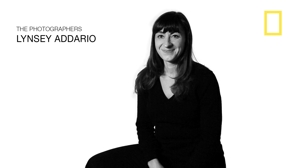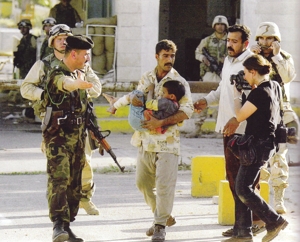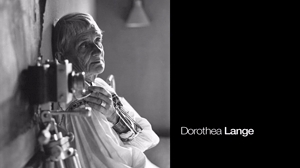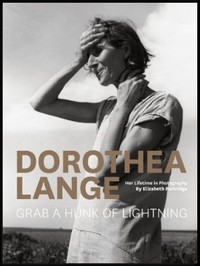|
(I'm woefully behind on my blog posts--sorry! I've been swamped with two big magazine features plus an average of 3-4 features each week for the Raton Comet and The Chronicle-News...while teaching full time! I have lots of photos and comments backed up waiting for the blog. My teaching career winds to a close at the end of May and I'll finally be able to catch up...and keep up! Thanks for keeping up with me.--Tim) April 7, 2015 Colors of the Season The third annual Aqua Easter Egg Hunt at Raton Regional Aquatic Center Saturday morning was a colorfest of kids and swimsuits and plastic eggs and water and light, great for photography. The temperature outside was 39 degrees but it was warm and humid inside: I had to wait awhile before the fog on my lens disappeared. It was a fun shoot. Look for these pictures in this week's Raton Comet and The Chronicle-News.
March 22, 2015 Over the Pass & Around Raton My weekly Over the Pass feature just marked its one-year anniversary in The Chronicle-News. Built around "man-on-the-street interviews" with a question of the week, the feature includes three respondents each from sister cities Trinidad, Colorado, and Raton, New Mexico. Inspired by Brandon Stanton's brilliant (and wildly successful) Humans of New York (HONY), OTP has pushed me out of my comfort zone to interview and photograph six people per week, and most of them are strangers. Setting a goal of a series of "stranger portraits" is a popular pastime and challenge for photographers and many take several years to reach 100. I took 312 (6 portraits x 52 weeks) in the past year and got paid for each one. Recently the Raton Comet added the Raton half of OTP as its own weekly feature called Around Raton with three respondents and (much smaller, tightly cropped) photos each week. Unlike the Chronicle, the Comet isn't publishing this feature online, but you can see all of the Raton content within the Chronicle's weekly OTP feature. All of this is another result of my having achieved a status as an independent (i.e. freelance) producer of content that any newspaper may buy. I've been fortunate that both the Chronicle-News and the Comet have been buying all of the work I produce for them. These three photos are from Raton during the past week. I photographed Martin Bone (top) at Rocky Mountain Physical Therapy where the pool and window light made this one of my recent favorites. I caught Frank Ferri just inside the door of Buffalo Chip on Historic First Street, and Raton Roar editor Kate Little just inside my own classroom window at Raton High School, so all three of these photos are built upon the use of window light, my favorite light source for portraits. All were shot with the Nikon 24-70mm, not particularly a portrait lens but at f/2.8 it nonetheless does the job beautifully.
March 17, 2015 Welcome to the Neighborhood, Dolly A weekend Mac update knocked out my web-software preferences and it took me and Christina three days to get me back into my own website--bizarre!--but now I'm back and just in time to post three photos from the six published in tomorrow's Raton Comet, two of which were also published in yesterday's The Chronicle-News. Both papers featured the photo at right on their front pages with Brenda Ferri front and center, resplendent as title character Dolly Gallagher-Levi. The Comet went much further and devoted a two-page centerfold to my photos alongside several impressive images by 15-year-old Teresa Blaisure. The top image was printed 15" wide across the two pages. The front row at top, from left, shows Clint Henson, Zach Osborn, Brenda Ferri, Patrick Blaisure, and Allie Irvin. Impressive choreographer/dancer Frances Vance peeks out from under the blue umbrella behind Irvin at back right. The dancing was a highlight, along with some comedy, but the entire production was a visual feast that made for great photography. I found Dolly's story less engaging than that of the couples she matched up--particularly these at the left, played by Susan Ward & Clint Henson and Laura Robertson & Zach Osborn (from left to right). One glitch in the Comet review was the statement that "Friday night's performance included at least three" of the original 1978 cast. I actually wrote "Friday night's audience," which the Chronicle-News ran correctly, but the Comet editor inexplicably changed "audience" to "performance," causing an error. It happens. All in all, a fun show and lots of sumptuous images.
March 10, 2015 How to Shoot a Meeting Newspaper reporters and photographers often report on meetings, and every article needs a photo to draw readers' attention, but photographing a meeting is so challenging that most of the photos of meetings that I see in newspapers make me cringe. A good close photo of a speaker is the best bet, but many meetings feature entire city councils or committees. I've seen too many images where the photographer simply stood in the doorway and photographed the whole room. There's no focal point, no center of interest, nothing to look at. In the case of last night's community economic-development meeting entitled "Can Small Towns Be Cool?" featuring Michigan sociologist Dr. David Ivan at Raton Convention Center, I had a huge cavernous room, one hundred rapt listeners and one speaker, all under flourescent lighting. I tried a few angles but knew that only one image would merit inclusion with my article. This (above, click to enlarge) was my best shot because it conveyed the whole story, showing both speaker and audience and their engagement with each other. (Shots taken from the back of the room didn't do the latter.) Standing behind the speaker, using a 70-200mm lens at 200mm and f/2.8, put me close and enabled me to blur the audience while putting the primary subject, Dr. Ivan, in sharp focus. I wanted to give a sense of the biggest audience I could, but if I pulled back too wide it would diminish the focal point and the photo would no longer be about something. We'd be back to an image of a room full of people. I was helped by the light that illuminated audience members (I don't use flash), but the flourescent light had its usual greenish cast. I compensated by adjusting color balance as much as I could from green toward red. Ultimately, the audience is relatively red and Dr. Ivan is still green, but if I pushed Dr. Ivan any more toward red, the audience would have looked too red. This was a compromise. I could have done better on Dr. Ivan's green in Photoshop, but I'm not much of a Photoshop guy, relying mostly on what's available to me in Nikon Capture NX2 with NIK filters. I hope the image succeeds in giving the reader a sense of what it was like to be there, with a close look at the primary attraction, Dr. Ivan himself, interacting with his audience. ( Chronicle-News Raton Comet )
March 4, 2015 Studying Two Masters As I gear down my teaching career and gear up a retirement devoted more fully to telling stories via words and photos, I've been studying a pair of masters in two new books, one of which is a companion to a new PBS American Masters film. Lynsey Addario (above) was born eight years after Dorothea Lange's death but the two share a commitment to social justice and an ability to affect our thinking by putting strikingly composed images before our eyes. I've been a student and fan of Dorothea Lange's work since discovering the FSA photographs while I studied American history at CSUN 45 years ago. Her work has been a huge influence on my sensibilities and my eye. In contrast, I've been studying Lynsey Addario's work in real time as it develops and only for the past few years. Her work has been impossible to miss in TIME, New York Times, National Geographic, and sometimes national headlines. With her new book release, she's cemented her star status, earned the long and hard way but possible only because of the strength of the images she's created. Her book's a great read for anyone, partly because it turns out that she writes remarkably well--who knew?--and partly because a generous supply of her color photographs is included throughout, illustrating key aspects of her story. At 22, she'd already discovered a wanderlust and a love of photography. She was freelancing in Argentina for $10 a photo. Back in NYC, she freelanced for AP until September 11 changed her life even more than it changed most of the rest of our lives. She's been spending weeks and months photographing assignments in trouble spots around the world, often finding the stories beside and behind the front lines, stories of women and children and displaced victims of violence. Her best images are stunningly vibrant, beautifully composed, and infinitely moving. The book gives an intimate first-person glimpse at the stories behind the experiences and the images. I found the book hard to put down. I love Chung Lee's photo in the book of Addario working in Iraq (right). I just learned that Jennifer Lawrence has signed to play Addario in the film adaptation of the book, to be directed by Steven Spielberg, announced two days ago after a bidding war that included projects offering Reese Witherspoon and Natalie Portman for the lead role. Now 41, I'd guess that Addario is a couple years away from household-word status when Spielberg's film comes out. Few photographers ever achieve that; Annie Liebovitz comes to mind, a photographer who couldn't be more different than Lynsey Addario. Dorothea Lange also produced stunning images seen in newspapers and magazines throughout the world by the time she was 40. She, too, affected political policy while traveling to picture the plights of the disenfranchised for the national and international press. She, too, was a great photographer and artist. "Migrant Mother" is the best known of her countless iconic images instantly recognized anywhere in the world. In 2014, PBS released it's American Masters documentary, "Dorothea Lange - Grab a Hunk of Lightning," made by Lange's filmmaker granddaugher Dyanna Taylor. The companion book by Elizabeth Partridge covers much of the same territory, and more. Both get my highest recommendation. Lange gave great thought to her life's work. I enjoyed many of her quotes, including these: "I believe in living with the camera, and not using the camera. Suddenly, if you are working a lot, it takes over and then you see meaning in everything. You don't have to push for it. That's what I mean by the visual life. Very rare." She speaks of "losing herself," of "getting lost," immersing herself for 2-3 hours in a subject before she starts "seeing" the images. "I will set myself a big problem. I will go there, I will photograph this thing, I will come back, and develop it. I will print it, and I will mount it and I will put it on the wall, all in twenty-four hours. I will do this, to see if I can just grab a hunk of lightning." Dorothea Lange and Lynsey Addario have both produced stunning work whose influences I can only hope to find someday in my own work.
|


